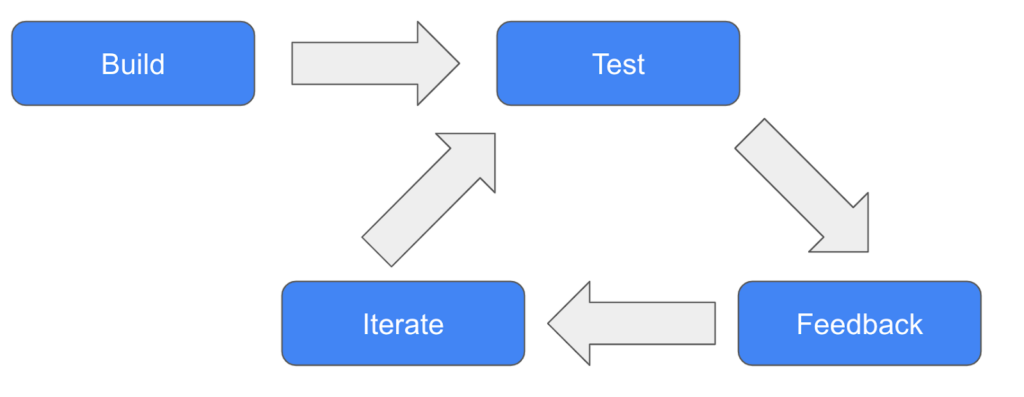In the fast-paced and ever-evolving digital landscape, the pursuit of a superior website conversion rate has become a critical aspect of online success. As businesses strive to carve their niche in the virtual realm. Today I am going to tell you 3 steps to improve your website conversion rate. Which are beacons of strategic guidance. This comprehensive guide embarks on a journey to unravel the intricacies of these three pivotal steps. Which offers not only actionable insights but a holistic perspective on their interplay. In an era where user expectations are continually shaped by technological advancements and dynamic market trends, mastering these steps is not merely a competitive advantage. It’s a necessity for businesses seeking sustained relevance and prosperity.
As we delve into the nuances of conversion rate optimization. It becomes evident that it’s not a one-size-fits-all endeavor. Each website, unique in its offerings and audience, requires a tailored approach. The landscape is not just about attracting visitors. It’s about transforming them into engaged users who find value in your offerings, through these 3 steps. We’ll navigate the complexities of understanding your audience, optimizing website design and content, and the ongoing process of testing and iterating. This guide isn’t a static roadmap but a dynamic exploration, acknowledging that the digital terrain is ever-shifting, and success lies in the agility to adapt and innovate. So, let’s embark on this journey together, uncovering the strategies that will not only elevate conversion rates but also establish your digital presence as a compelling force in the vast online ecosystem.
Understanding Your Audience To Improve Your Website Conversion Rate

- User Persona Analysis
Unlocking the true potential of your website begins with an in-depth user persona analysis. Beyond just demographic data, delve into psychographic details—understand aspirations, pain points, and behavioral patterns. This comprehensive understanding empowers you to tailor your website to resonate deeply with your audience, fostering a connection that transcends traditional marketing strategies.
- User Journey Mapping
User journey mapping is not merely a visualization exercise. It’s a strategic roadmap. Identify not only touchpoints but also emotional highs and lows throughout the journey. By aligning your website’s content and design with these emotional moments. You create an immersive experience that guides visitors seamlessly toward conversion, making each step purposeful and memorable.
- Analytics Utilization
Analytics is your compass in the digital wilderness. Beyond the basics, delve into granular details. Understand the source of your most engaged users, the pages that lead to drop-offs, and the devices predominantly used. With this nuanced understanding, you can tailor your strategies to meet your audience precisely where they are, ensuring your website is a dynamic entity that evolves with user preferences.
Optimizing Website Design and Content To Improve Website Conversion Rate

- Clear Call-to-Action (CTA)
A clear call to action is not just a button; it’s an invitation. Craft your CTA with compelling copy that conveys value and urgency. Experiment with different formats, colors, and placements. A/B tests not only the design but also the language used. Sometimes a subtle tweak in wording can significantly impact click-through rates.
- Simplify Navigation
Navigation isn’t just about getting from point A to B; it’s about creating an intuitive journey. Conduct usability testing to identify potential roadblocks. Implement a logical hierarchy that aligns with user expectations. Consider incorporating visual cues and micro interactions to guide users effortlessly, making navigation a seamless and enjoyable experience.
- Mobile Optimization
Mobile optimization is no longer a choice; it’s a necessity. Beyond responsive design, think about mobile-first experiences. Consider the constraints and advantages of mobile platforms. Optimize images for faster loading, simplify forms for easy completion, and ensure that every aspect of your website adapts seamlessly to varying screen sizes. A mobile-optimized website not only caters to a broad audience but also positively influences search engine rankings.
Test and Iterate To Improve Your Website Conversion Rate

- A/B Testing
A/B testing is not a one-time event; it’s an ongoing journey. Test not only visual elements but also user flows and content variations. Don’t limit testing to just conversion pages; explore different facets of your website. Analyze results meticulously, understand the “why” behind the data and use these insights to refine your website continually.
- Conversion Funnel Analysis
Your conversion funnel isn’t a fixed entity; it’s a dynamic process. Regularly analyze each stage of the funnel. Identify drop-offs and investigate the potential reasons. Consider implementing exit-intent pop-ups, personalized incentives, or subtle nudges to keep users engaged and guide them through the conversion funnel seamlessly.
- Feedback Collection
Feedback is the lifeblood of optimization. Leverage various channels surveys, user interviews, and even social media to gather insights directly from your audience. Understand not only what works well but also areas that need improvement. Act on this feedback promptly, demonstrating to your audience that their opinions matter and that your website is a responsive and user-centric platform.
Additional Insights to Improve Website Conversion Rate
- Harnessing the Power of Personalization
Personalization is more than just a buzzword. It’s a game-changer. Beyond addressing users by their names, delve into personalized content recommendations, tailored email campaigns, and dynamic website experiences. The era of one-size-fits-all is over; users crave experiences crafted uniquely for them.
- Emerging Trends in Conversion Rate Optimization
Stay ahead of the curve by exploring emerging trends in conversion rate optimization. Artificial Intelligence (AI) and machine learning are revolutionizing personalization efforts. Interactive content, such as quizzes and polls, engages users actively. Voice search optimization is becoming increasingly crucial in a world dominated by smart assistants.
- Building Trust through Transparency
Transparency isn’t just a buzzword; it’s a fundamental building block of trust. Communicate your brand values, data usage policies, and security measures. Displaying trust badges, security certifications, and transparent pricing builds confidence, reassuring users that your website is a safe and trustworthy space.
- The Role of Social Proof in Conversions
Leverage the power of social proof to influence potential customers. Feature customer testimonials, case studies, and user-generated content prominently on your website. Consider incorporating social proof in your CTAs to create a sense of community and validate the value of your products or services.
- Navigating E-commerce Conversion Challenges
For e-commerce websites, addressing specific challenges is vital. Enhance security measures to instill confidence in online transactions. Optimize product pages with high-quality images, detailed descriptions, and customer reviews. Implement a hassle-free checkout process, and consider incorporating features like live chat for instant customer assistance.
Frequently Asked Questions (FAQs)
- How long does it take to see improvements in conversion rates?
The timeline for improvements varies, influenced by factors such as your industry, website traffic, and the extent of changes implemented. While some businesses may see positive changes within a few weeks, others might require more time for substantial results.
- Are these steps applicable to all types of websites?
Yes, the outlined steps are versatile and adaptable to various website types and industries. Whether you run an e-commerce site, a blog, or a corporate website, understanding your audience, optimizing design and content, and continual testing are foundational principles for improved conversion rates.
- Can I skip A/B testing if my website is performing well?
A/B testing is not exclusive to struggling websites. It’s a strategy for continuous improvement. Even if your website is performing well, A/B testing can unveil potential optimizations that further enhance user experiences and boost conversion rates.
- Is mobile optimization essential for small businesses?
Absolutely. In a mobile-centric era, small businesses must prioritize mobile optimization. A significant portion of online users access websites via mobile devices, and neglecting mobile optimization can result in a substantial loss of potential customers.
- How often should I update my user personas?
Regular updates, at least annually, are recommended for user personas. Market trends and consumer behavior evolve, and keeping your user personas current ensures your strategies align with the changing landscape, maintaining relevance and effectiveness.
- Can I implement all these steps simultaneously?
While simultaneous implementation is possible, a phased approach allows for better tracking and optimization. Gradually integrating these steps provides a clearer understanding of each element’s impact, facilitating more informed decision-making and refining strategies based on real-time data.
Conclusion
In the culmination of our exploration into the 3 steps to improve your website conversion rate. We emerge with a profound understanding that conversion optimization is not a finite destination but an ongoing journey. Through the meticulous examination of audience nuances, the strategic optimization of website design and content, and the continuous process of testing and refinement, businesses can forge a path toward sustained digital success. The fusion of data-driven insights and human-centric design principles underscores the essence of this guide, emphasizing that conversion rates are not just metrics but reflections of meaningful interactions between businesses and their audiences.
As we conclude, it becomes apparent that the digital landscape is marked by dynamism and constant evolution. The steps outlined herein are not rigid rules but adaptable principles that empower businesses to navigate the ever-shifting terrain. By implementing these strategies, businesses not only enhance their conversion rates but also cultivate a responsive and user-centric digital presence. The journey to improved conversion rates is not solitary. It’s a collaborative endeavor between businesses and their audiences. Through this comprehensive guide, we extend an invitation to businesses to not just meet but exceed their conversion goals, creating a digital legacy that resonates with users and stands the test of time.














